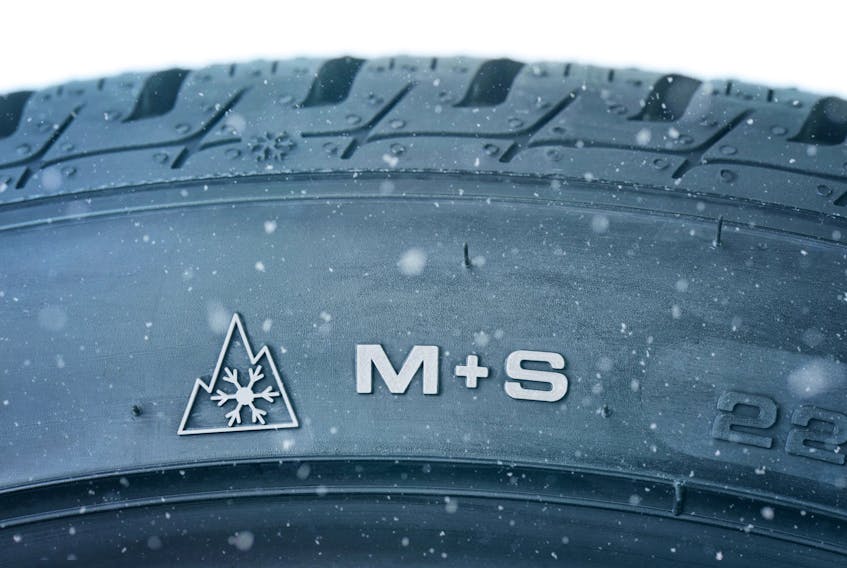While winter tires are mandatory in some areas of the country during winter months, many drivers in other parts of the country use all-season or mud and snow (M+S) tires year around on their vehicles. Driver’s who have experienced winter tires while driving on icy roads though, quickly become believers in the advantage winter tires provide.
The question is: When should you replace those worn winter tires? A tire is legally worn out when it reached a minimum of 2/32 inch of tread depth but perhaps you should get new tires before then.
Several areas of winter tire design help with provide the traction. Tread design, such as grooves, block layout and pattern provide about 50 per cent of the traction on fresh snow, but this quickly drops off as the snow packs. By the time it becomes icy snow, the tread design helps very little with traction.
Sipes, those little cuts you see on the surface of the tread, can provide up to about 40 per cent of the traction on packed and icy snow. They work in two ways. First, they have many small edges that can grip the slick road surface. Second, water between the tire tread and the ice surface can be picked up in the sipes so that the tire isn’t “floating” on the ice. Some manufacturers use microscopic voids in the rubber in addition to sipes to allow water to escape from the ice surface. Wet ice has to be the lowest traction surface we drive on.
Winter tire engineers also concentrate on compounds that will grip ice and the road. Many materials such as walnut shell or silica are added to the rubber tread mix to help bite into the ice. Theories are that the silica nano particles create grip both chemically and physically with the ice surfaces. One of the keys to producing a premium winter tire is to mix the right type and amount of silica so it is dispersed throughout the tire tread.
The tread compound provides about 40 per cent of the tire traction and this remains remarkably consistent in most road conditions, from fresh snow to icy packed snow. The compound benefits only begin to decrease when driving on black ice (ice on the road you can’t see), where the compound may only provide about 10 per cent of the traction.
Winter tire rubber compounds are formulated that flex more in cold weather so they conform to the icy surface but this also causes flex in the tread blocks which can hinder vehicle handling. Decades ago, Bridgestone made winter tires that used soft rubber on the surface with firmer less flexible rubber in the bottom half of the tread.

This improved handling but provided only half the life for a “winter” tire. Since then, there are many other ways to provide handling while maintaining winter traction. One way is to provide interlocking sipes that lock the smaller tread blocks together when traction forces are applied.
Dual rubber compound tires are still on the market and now some manufacturers will use more flexible rubber at the bottom of the tread with firmer rubber near the surface. As tires get older, the rubber becomes harder. Using more flexible rubber at the bottom of the tread still gives grip on ice when the tire is three or four years old. Even with these multi-layer tread compounds, winter tires are safe to drive in the summer. They do wear quicker in warm weather however.
Winter tires also need good mechanical grip in snow conditions, so the tread blocks are often wedge-shaped to hold snow in them. The deeper the tread blocks, the easier this is to do. Most winter tire manufacturers recommend a minimum of 6/32 inch tread depth (about half the tread depth of new tires) for best snow traction.
For this reason, once you have reached this tread depth, use the tires in spring and fall but it is better to install new ones for optimum winter traction even though the tires still have tread on them that will work well on icy roads.
A set of winter tires may sound expensive but they are cheap compared to the human and property costs of a collision caused by poor traction. Amazingly, all this technology is available in a tire, often at a much lower price that a pair of trendy running shoes.









